Complete Solutions to Exercise-II (H.W) of chapter WAVES of Class 11 book with complete answers and questions
| Class 11 | PHYSICS |
| Chapter | WAVES |
| NARAYANA | Exercise-II (H.W) |
| Number Of Questions | 17 |
| Academic Year | 2023-24 |
A transverse wave is travelling along a string from left to right. The figure below represents the shape of the string at a given instant. At this instant the points have an upward velocity are (here X-wave displacement, Y- particle displacement)
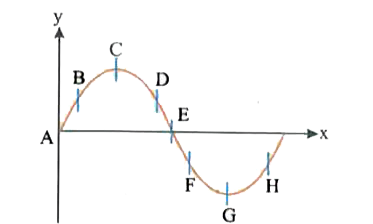
View SolutionAt any instant a wave travelling along the string shown in figure. Here, point A is moving upward. Which of the following statement is true?

View SolutionThe figure shows an instantaneous profile of a rope carrying a progressive wave moving from left to right, then
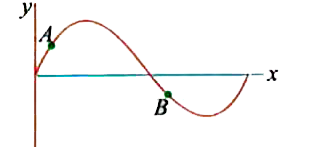
`(a)` the phase at A is greater than the phase at B
`(b)` the phase at B is greater than the phase at A
`(c )` A is moving upwards
`(d)` B is moving upwards
View Solution
The diagram below shows an instantaneous position of a string as a transverse progressive wave travels along it from left to right Which one of the following correctly shows the direction of the velocity of the points 1,2 and 3 on the string?
View SolutionA sinusoidal wave travelling in the positive x direction has an amplitude of 15 cm, wavelength 40 cm and frequency 8 Hz. The vertical displacement of the medium at t =0 and x = 0 is also 15 cm, as shown
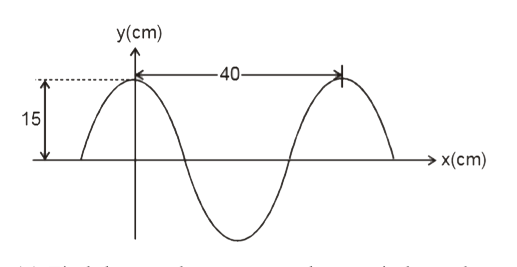
(b) Determine the phase constant `phi`, and write a general expression for the wave function.
View SolutionThe rope shown at an instant is carrying a wave travelling towards right, created by a source vibrating at a frequency n . Consider the following statements
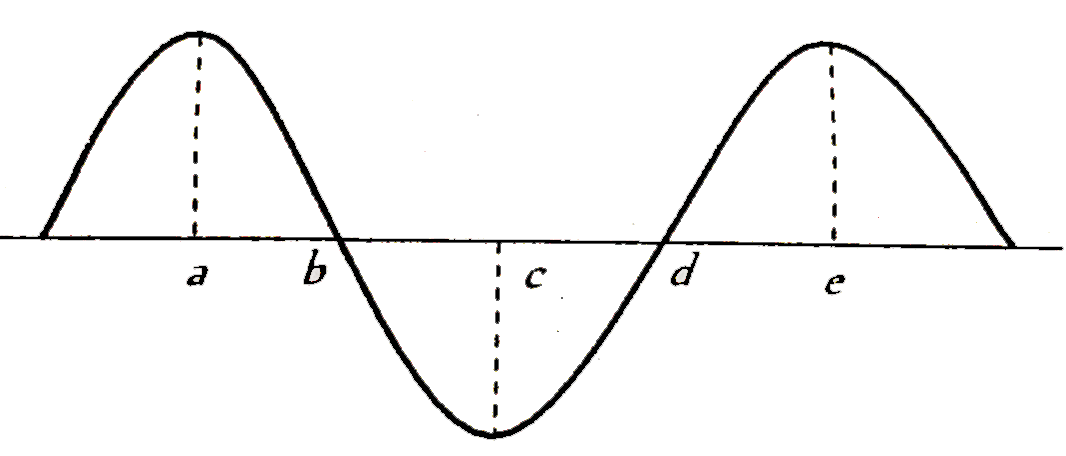
I. The speed of the wave is `4n xx ab`
II. The medium at a will be in the same phase as d after `(4)/(3n)s`
III. The phase difference between b and e is `(3pi)/(2)`
Which of these statements are correct
View SolutionOf the following the graph that better represents the variation of frequency 'v' of a vibrating string with the square root of tension `sqrt(T)` is
View SolutionA man is standing on a railway platform listening to the whistle of an engine, that passes the man at constant speed without stopping. If the engine passes the man at time `t_(0)`, how does the frequency f of the whistle as head by the man changes with time ?
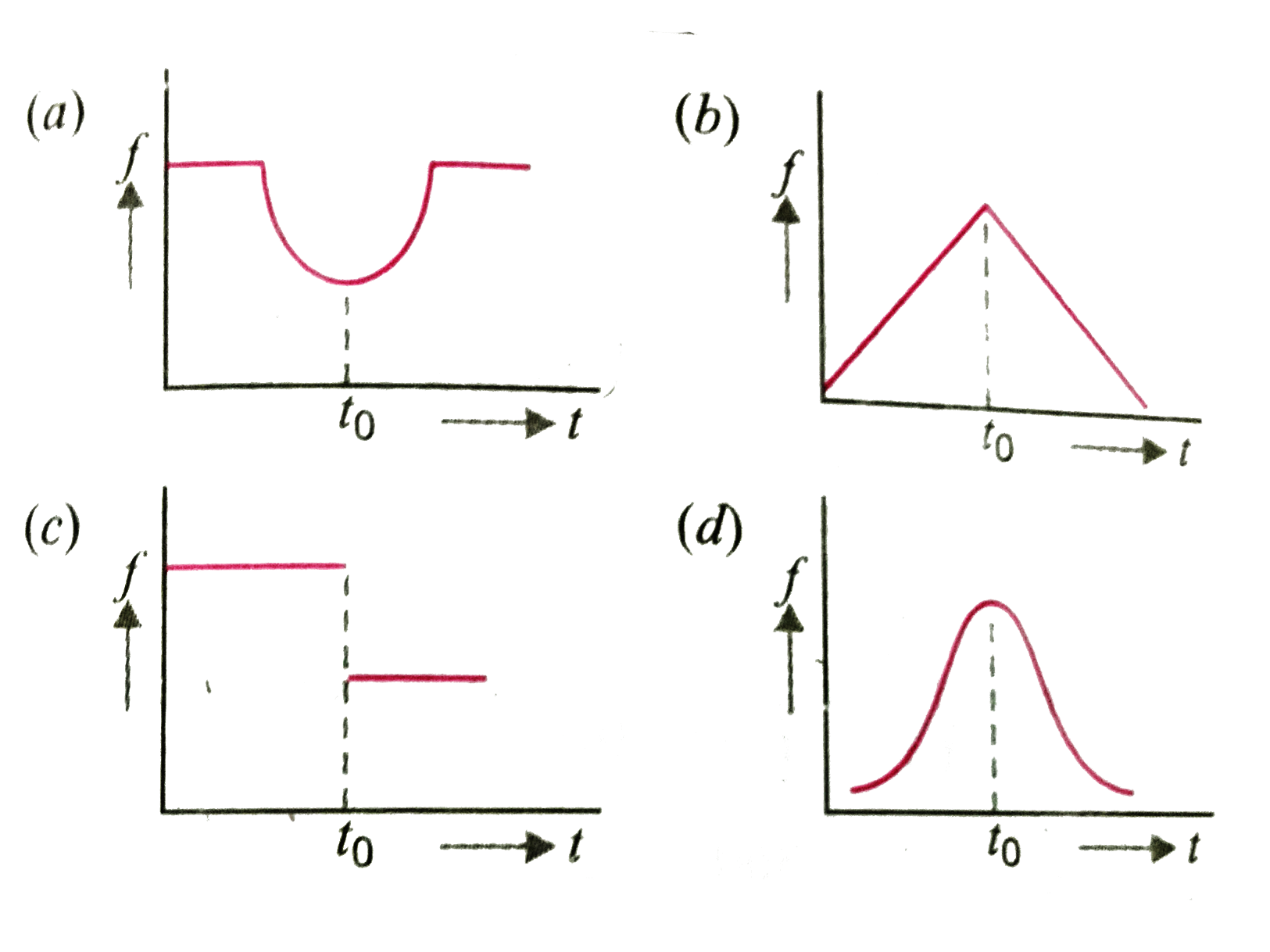
View Solution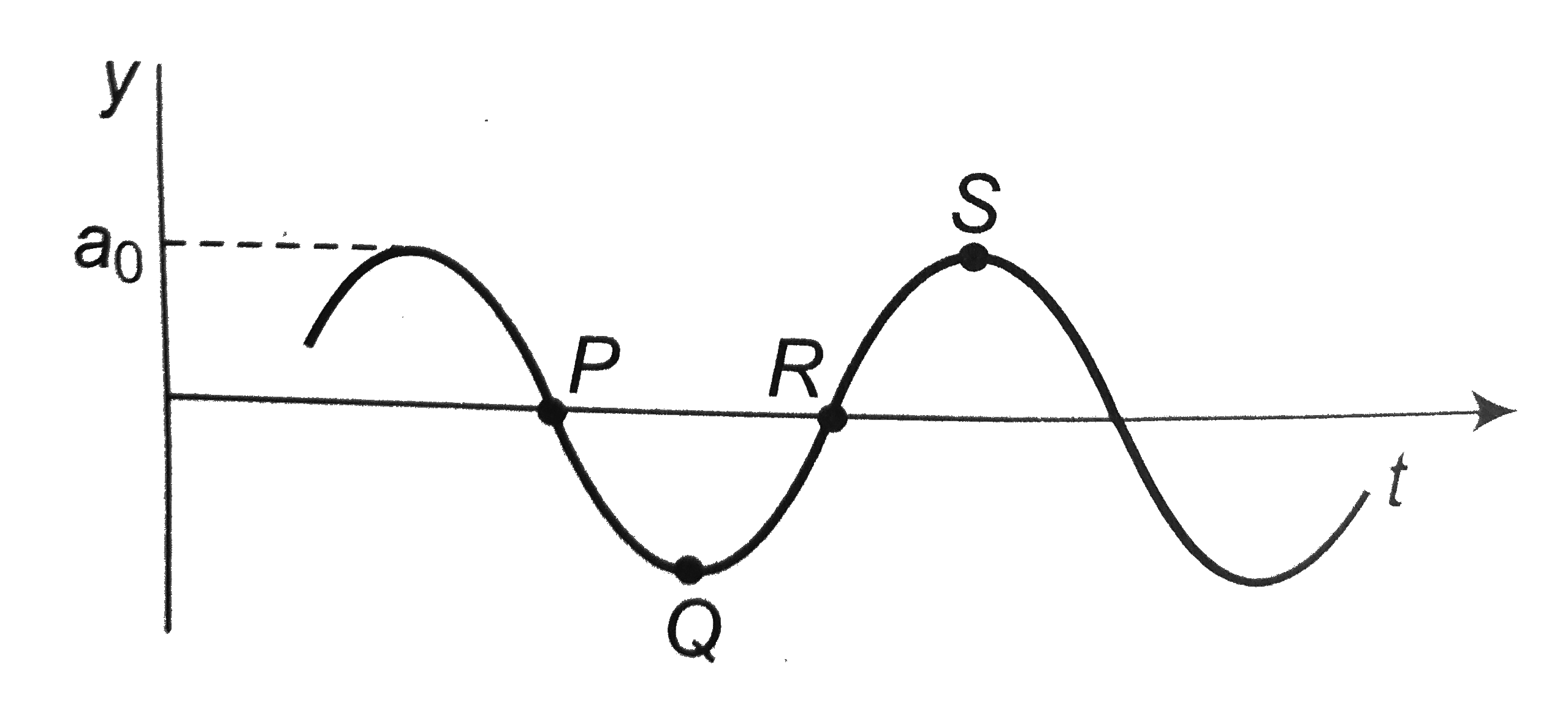
A wave motion has the function `y=a_0sin(omegat-kx)`. The graph in figure shows how the displacement y at a fixed point varies with time t. Which one of the labelled points Shows a displacement equal to that at the position `x=(pi)/(2k)` at time `t=0`?
View Solution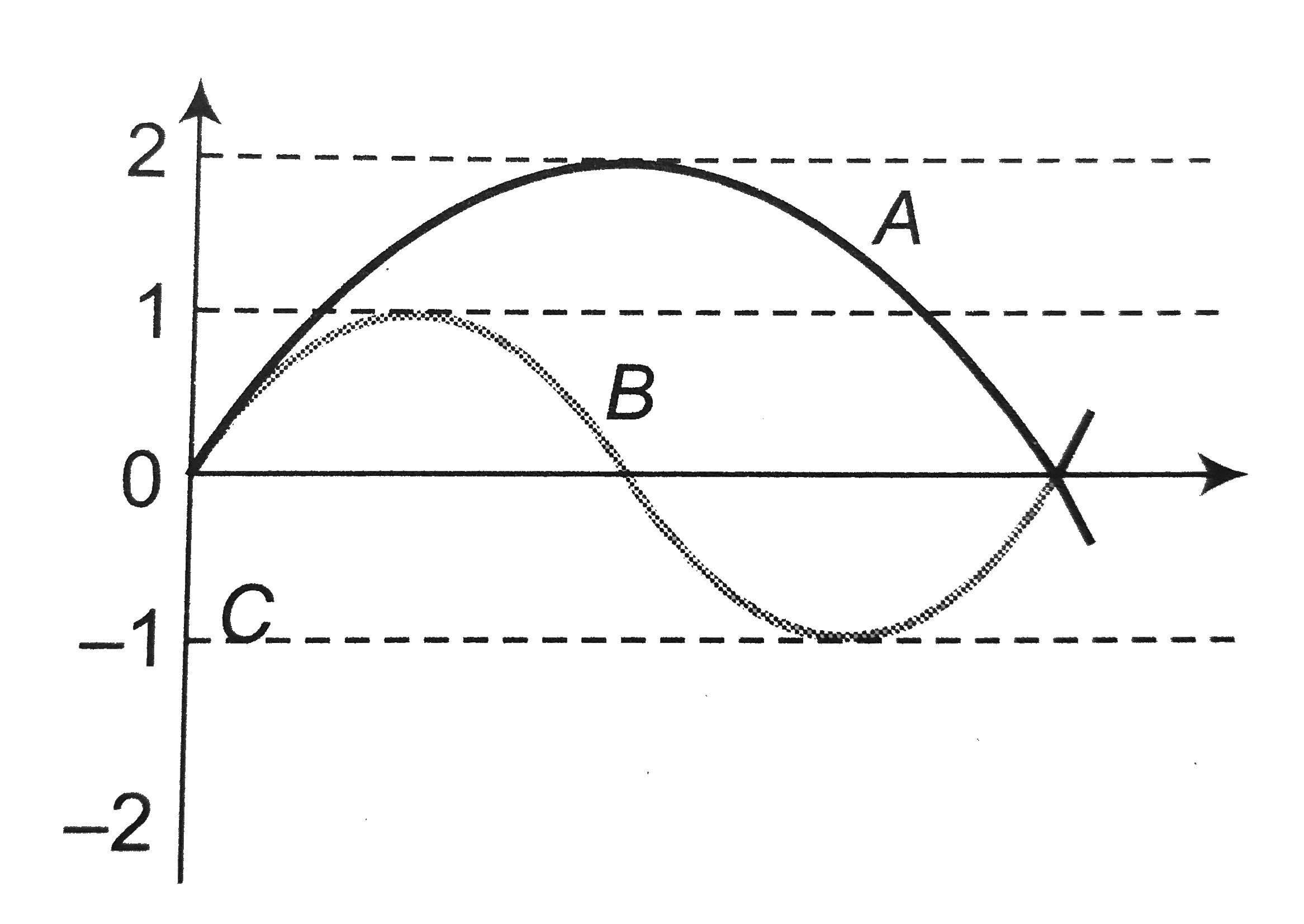
The displacement time graph for two sound waves A and B are shown in the figure. Then the ratio of their intensities `I_(A)//I_(B)` is equal to
View SolutionA string of length `1m` stretched at both ends vibrating with frequency `300Hz` which is `3` times the fundamental frequency
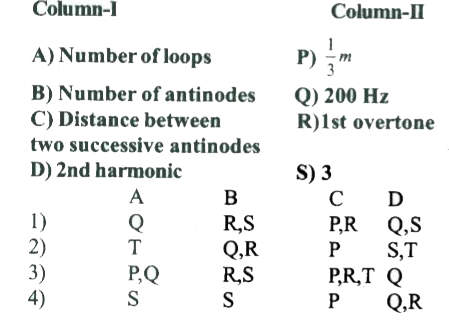
View SolutionMatch the following
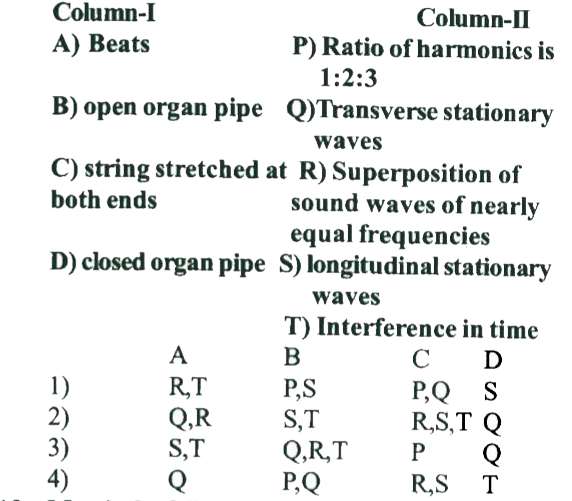
View SolutionMatch the following

View Solution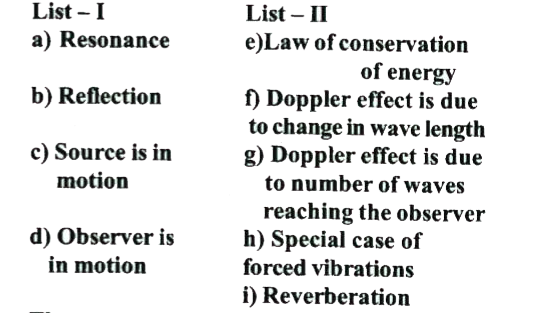
View SolutionIn case of superposition of waves (at`x=0`), `y_(1)=4sin(1026pit)` and `y_(2)=2sin(1014pit)`
`(a)` the frequency of resulting wave is `510Hz`
`(b)` the amplitude of resulting wave varies at frequency `3Hz`
`(c )` the frequency of beats is `6` per second
`(d)` the ratio of maximum to minimum intensity is `9`
The correct statements are
View SolutionIn case of stationary sound waves in air the correct statements(s) is a/are
`(A)` each air particle vibrates with the same amplitude
`(B)` amplitude is maximum for some particles and minimum for some other particles
`(C )` the particles do not execute periodic motion
`(D)` phase of particles in a loop is same
View SolutionThe equational of a stationary wave in a string is `y=(4mm) sin [(314m^(-1)x] cos omegat`. Select the correct alternative (s).
View Solution
Exercise-II (H.W) questions and complete solutions for chapter WAVES of NARAYANA PHYSICS (HINGLISH) of Class 11